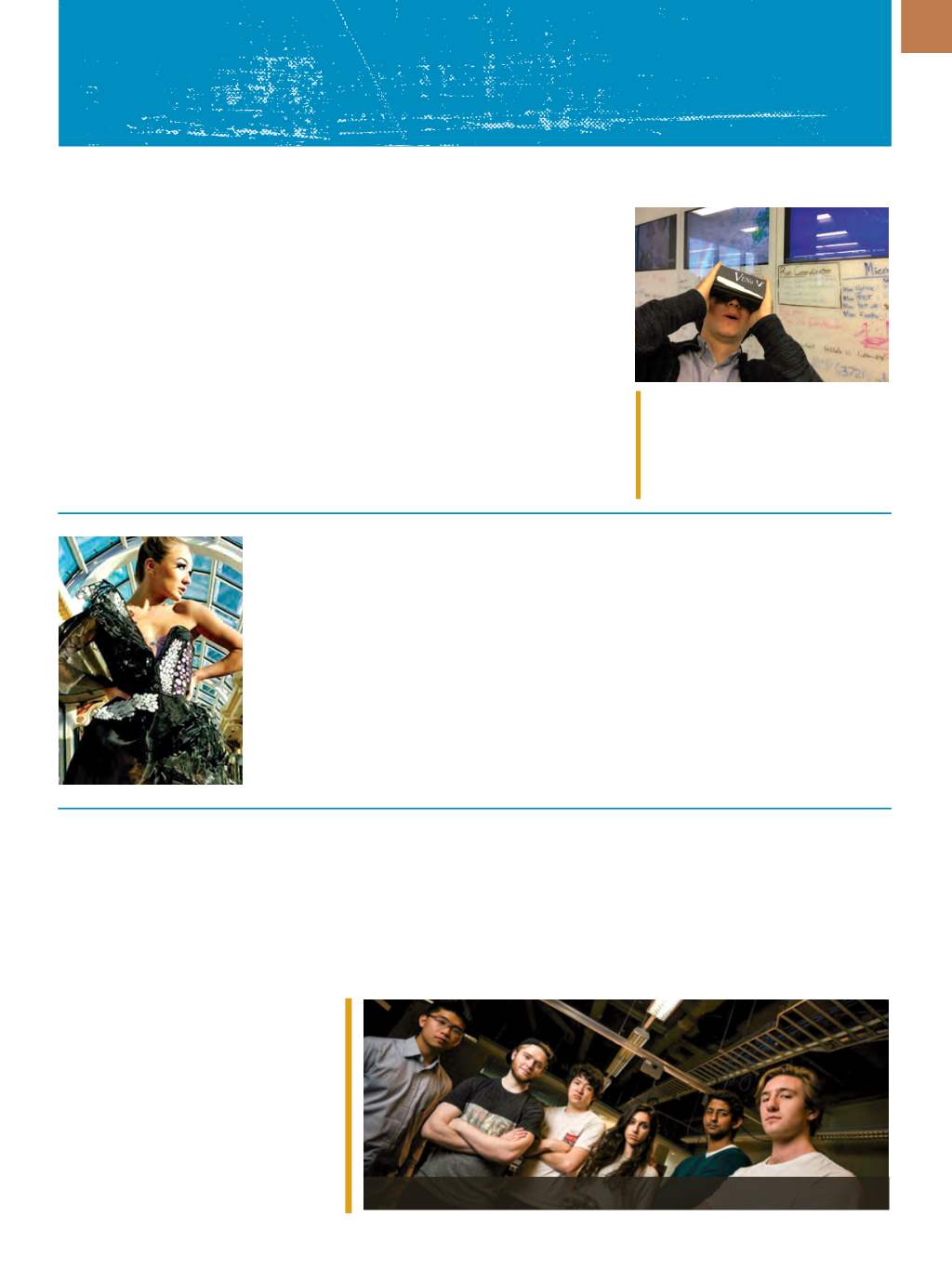

A D V A N C E D
M A T E R I A L S
&
P R O C E S S E S | F E B R U A R Y / M A R C H
2 0 1 7
7 9
STRESS RELIEF
VENu works with Google Cardboard and
exhibits both virtual and augmented
reality features, enabling users to learn
more about neutrinos. Courtesy of Oxford
University.
NEW APP GETS REAL ABOUT NEUTRINOS
Not long ago, observing fundamental particles was reserved for
scientists with complex equipment. A new app plans to change all that. VENu
is a free smartphone app designed by Oxford University scientists to help fu-
ture physicists see neutrino activity. The app is comprised of data gath-
ered by scientists from the Microboone experiment, which was launched to
detect and understand neutrinos—subatomic particles that only very rarely in-
teract. Neutrinos are notoriously difficult to capture, but state-of-the-art detec-
tors like Microboone are now recording their interactions. A 3D platform, VENu
works with Google Cardboard and is designed to exhibit both virtual and aug-
mented reality features. The personal virtual reality viewer allows users to un-
derstand many complexities of the Microboone experiment and to learn more
about neutrinos. The platform also includes video game features to challenge us-
ers. VENu is free to download from both the App Store and Google Marketplace.
venu.physics.ox.ac.uk.
GRAPHENE ENHANCES LITTLE BLACK DRESS
A new evening dress showcases one of the future uses of graphene, incorporating it into
fashion for the first time. The project between intu Trafford Centre, wearable tech com-
pany Cute Circuit (dressmaker for Katy Perry and others), and the National Graphene
Institute at The University of Manchester, UK, uses graphene in a number of innovative ways
to create the world’s most high-tech little black dress. The dress is complete with a graphene
sensor that captures the wearer’s breathing rate via a contracting graphene band around
the waist; a micro LED attached across the bust on translucent conductive graphene re-
sponds to the sensor, causing the LED to flash and change color based on breathing rate. A
3D-printed graphene filament shows the intricate structural detail of graphene in raised di-
amond-shaped patterns and features flashing LED lights. The high-tech dress can be con-
trolled by “The Q” app created by Cute Circuit to change the way the garment illuminates.
www.manchester.ac.uk.
STAY THIRSTY, MY ENGINEERING FRIENDS
A team of University of California, San Diego (UCSD) engineering students aims to find out if beer can be brewed on the moon.
The students are finalists in the Lab2Moon competition being held by TeamIndus, one of four teams with a signed launch contract
to send a spacecraft to the moon as part of the Google Lunar XPRIZE challenge. Understanding how yeast behaves on the moon
is not just important for brewing beer in space: It’s also important for developing pharmaceuticals and yeast-containing foods like
bread. The team is among 25 finalists selected from a pool of 3000 to compete for a spot aboard the TeamIndus spacecraft, which
is planned for launch on December 28. If the UCSD team is selected, not only will they be the first to brew beer on the moon, the
students believe they will be the first to brew beer in a fermentation vessel the size of a soda can. “Our canister is designed based
on actual fermenters,” says team leader
Srivaths Kaylan. “It contains three com-
partments—the top will be filled with un-
fermented beer, and the second will con-
tain yeast. When the rover lands on the
moon with our experiment, a valve will
open between the two compartments, al-
lowing them to mix. When the yeast has
done its job, a second valve opens and the
yeast sink to the bottom and separate from
the now fermented beer.”
ucsd.edu.
UCSD students hope to brew beer on the moon.


















